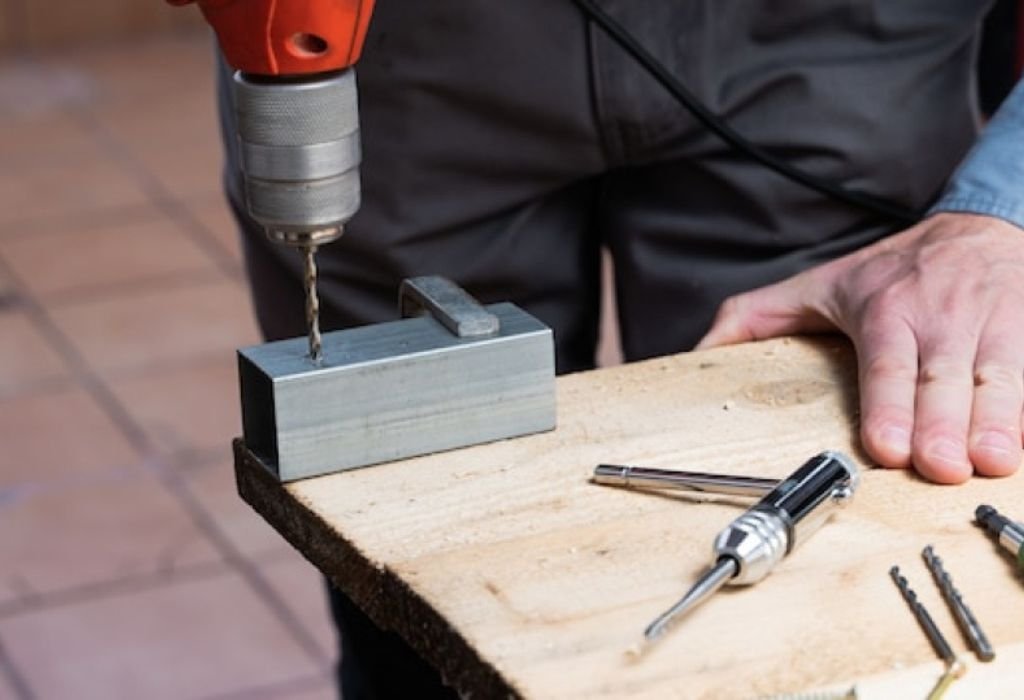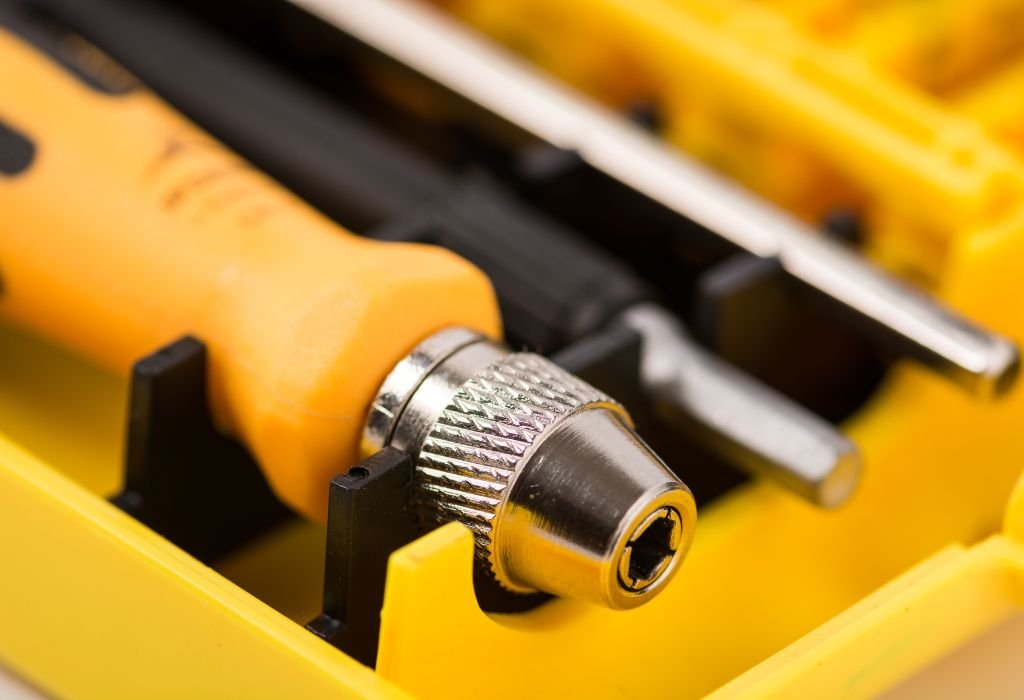A flat tire on a busy highway can turn a simple drive into a stressful situation. The immediate thought is whether the tools on hand are enough to get back on the road quickly.
Many drivers carry compact cordless tools, including impact drivers designed for screws and bolts.
This sparks the common question: can i use an impact driver to change tires safely?
The problem arises because lug nuts are not like wood screws or drywall anchors.
They are designed to secure a wheel under thousands of pounds of force and must meet strict torque requirements to keep passengers safe.
Automotive studies show that most passenger vehicles require 80 to 120 ft-lb of torque on lug nuts, with many cars averaging near 100 ft-lb source.
An impact driver, measured in inch-pounds, often struggles to deliver consistent torque in this range.
Even if a driver manages to loosen a lug nut, tightening is where safety risks multiply.
According to Tire Rack, final tightening should always be done with a calibrated torque wrench to avoid warped rotors, stripped studs, or loose wheels source.
This blend of curiosity, urgency, and safety makes the topic more than a simple yes-or-no answer.
The right approach can save time and prevent dangerous mistakes, while the wrong one can lead to costly repairs or accidents.
In the sections ahead, the differences between impact drivers and impact wrenches will be explored, torque requirements explained, and safe practices outlined.
By the end, you will know exactly when a driver can assist and when only the proper tools should be trusted.
Impact Driver vs Impact Wrench: What’s the Difference?

At first glance, impact drivers and impact wrenches may look similar, but they are designed for very different jobs. Understanding their differences is the key to knowing whether you can use one for tire changes.
An impact driver typically has a 1/4-inch hex collet and is built to drive screws, bolts, and fasteners at high speeds. It delivers torque measured in inch-pounds, which is often insufficient for lug nuts.
An impact wrench, on the other hand, usually comes with a 3/8-inch or 1/2-inch square drive. It delivers much higher torque measured in foot-pounds, making it the proper tool for lug nut removal and installation.
The gap in power is significant. A mid-range cordless impact driver may generate around 1,500 to 2,000 in-lb of torque, which translates to about 125 to 165 ft-lb. Many lug nuts require close to 100 ft-lb, but stuck or corroded ones often demand far more.
Can an impact driver remove lug nuts?
Yes, but only if the lug nuts are not overtightened or corroded.
Why is a 1/2-inch impact wrench preferred?
It delivers the necessary torque consistently and fits automotive impact sockets.
What’s the key difference in specs?
Impact drivers list torque in inch-pounds, while impact wrenches list torque in foot-pounds.
Can a driver damage lug nuts?
Yes, using the wrong tool may strip threads or fail to properly tighten the wheel.
Are combo driver-wrench tools reliable?
Some exist, but the wrench side is the only part strong enough for lug nuts.
How Much Torque Do You Need for Lug Nuts?
Lug nuts are not universal in their requirements, and torque values vary depending on vehicle class. Compact cars often require 80–90 ft-lb, midsize cars around 100 ft-lb, and SUVs or light trucks between 120–140 ft-lb.
These numbers highlight why impact drivers may fall short. Even when rated at 160 ft-lb, real-world performance often dips under load, especially with stubborn or rusted nuts.
What’s “typical” torque?
Around 100 ft-lb for many passenger cars, but always confirm your vehicle’s specification.
Will a driver rated at 1,600 in-lb (~133 ft-lb) work?
It might work on lightly torqued nuts but is not reliable for all situations.
What tool ensures proper torque?
A torque wrench is the only way to guarantee the correct specification.
Is overtightening dangerous?
Yes, it can warp brake rotors or strip wheel studs, creating serious safety risks.
Do torque requirements change by season?
Yes, winter tires and corrosion may increase the effort needed to break lugs free.
Can I Use an Impact Driver to Change Tires?
The short answer is yes, but with major limitations. An impact driver can help spin off lug nuts once loosened and snug them back on, but it is not the right tool for breaking loose or final tightening.
The best practice is to use an impact wrench or breaker bar to loosen, an impact driver to remove quickly if desired, and always finish with a torque wrench. Skipping this step risks your safety and your vehicle’s integrity.
So, can an impact driver do the job?
It can assist, but it should never be relied on as the main tool for tire changes.
When does a driver fail completely?
On rusted, over-torqued, or truck lug nuts that exceed its torque limits.
What’s the safer alternative?
A 1/2-inch impact wrench designed for lug nuts, combined with a torque wrench.
Can you tighten lugs with a driver?
Only to snug them down—final tightening must be done with a torque wrench.
What about emergencies?
In roadside situations, a driver may help temporarily, but proper retorquing later is essential.
The Right Tools (and Why They Matter)
Using the right tools makes tire changes faster, safer, and more reliable. Impact sockets, breaker bars, and torque wrenches are not optional—they are essential.
Torque sticks can help, but they do not replace a proper torque wrench. Safe wheel installation depends on following specs, not just getting the wheel “tight enough.”
Driver or wrench for roadside speed?
An impact wrench removes lugs faster and more reliably than a driver.
Why impact sockets over regular ones?
They are designed to handle repeated hammering loads without shattering.
Do torque sticks eliminate the need for a torque wrench?
No, they help reduce overtightening but must be followed by final torque checks.
Is the star pattern necessary?
Yes, tightening in a star pattern ensures the wheel seats evenly.
Should you invest in quality tools?
Yes, quality tools save time and prevent costly damage to wheels and studs.
Safe Step-by-Step: Changing Tires Without Damage
Changing a tire safely requires following proper steps in the right order. Skipping or rushing increases the risk of damage or injury.
Always loosen lug nuts slightly while the vehicle is still on the ground. Jack the car securely, remove the nuts, replace the wheel, hand-start threads, snug with a tool, lower the vehicle, then torque to spec.
Break loose before lifting?
Yes, this prevents the wheel from spinning and keeps the jack stable.
Final torque while in the air?
No, final tightening should be done on the ground for accuracy.
When should you re-torque?
Recheck torque after 50–100 miles of driving.
Is hand-starting important?
Yes, it prevents cross-threading and ensures proper seating.
Should you grease wheel studs?
No, unless specified by the manufacturer, as lubrication alters torque readings.
Common Mistakes to Avoid
Even experienced DIYers make errors when changing tires. The most common mistakes are overtightening, cross-threading, and using the wrong sockets.
Another frequent issue is relying entirely on power tools without verifying torque, which can cause wheels to loosen or studs to snap.
Is it safe to fully tighten with a driver?
No, overtightening is a serious risk and should be avoided.
Why do wheels wobble after a change?
This happens when lug nuts are unevenly torqued.
Can drivers break wheel studs?
Yes, excessive hammering with the wrong tool can cause damage.
Can a hammer drill replace an impact wrench?
No, hammer drills are built for drilling masonry, not removing lug nuts.
What if torque isn’t checked?
Skipping this step risks unsafe driving and possible wheel loss.
When You Really Need an Impact Wrench

Some situations absolutely require an impact wrench. Rusted, corroded, or overtightened lug nuts often demand torque far beyond what an impact driver can deliver.
Truck and SUV lug nuts commonly need over 120 ft-lb, and roadside emergencies are easier with the right tool. Investing in a cordless 1/2-inch impact wrench provides peace of mind.
What drive size is best for cars?
A 1/2-inch drive is the standard for lug nuts.
How much torque should it deliver?
Look for at least 200–300 ft-lb for reliable performance.
Mid-torque vs high-torque: which to choose?
Mid-torque covers most cars, while high-torque is for trucks and seized nuts.
Is a torque wrench still needed?
Yes, always finish with a torque wrench regardless of tool strength.
Are cheap impact wrenches reliable?
Not always—invest in a trusted brand to avoid breakdowns during emergencies.
Future Trend: Smarter Tools and Torque Control
Cordless tools are evolving quickly. Modern impact wrenches now offer torque control modes, auto-stop features, and smart electronics to prevent overtightening.
These innovations help reduce mistakes, but they do not replace the need for a torque wrench. Proper wheel torque will always be a manual step for safety.
Do smart impacts replace torque wrenches?
No, they reduce overtightening but still require manual torque checks.
Will impact drivers get strong enough in the future?
Technology is improving, but lug nut duty will likely remain for impact wrenches.
What’s the biggest safety takeaway?
Correct torque is essential for safe driving and must not be skipped.
Will roadside kits evolve?
Yes, expect compact, powerful cordless wrenches to become standard for travelers.
Are workshops already using smart torque tools?
Yes, many professional shops use digital torque tools alongside impact wrenches.
Conclusion
So, can i use an impact driver to change tires? Yes, but only as a helper. It can spin nuts on and off, but it lacks the power and accuracy to be the main tool for the job.
The safest method is clear: use an impact wrench or breaker bar to remove lug nuts, and always finish tightening with a torque wrench to the exact specification.
By following this method, you avoid costly repairs, improve safety, and protect your vehicle. In roadside emergencies or weekend projects, the right tools mean the difference between a quick fix and a dangerous mistake.

I’m John F. Nicholas, the founder, lead writer, and drill enthusiast behind 101drill.com. With years of hands-on experience in power tools and DIY projects, I created this platform to share practical knowledge, expert tips, and real-world insights to help others master the art of drilling.
